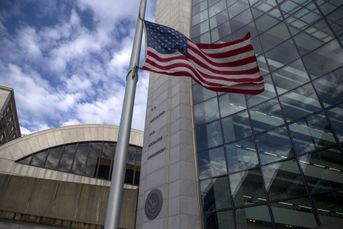Madoff scam recovery hits $10 billion, almost 60% of lost money
The cost of liquidating the con man's defunct investment advisory firm has topped $1 billion but his former clients aren't footing the bill.
Unwinding the biggest Ponzi scheme in U.S. history hasn’t been cheap.
Six years after Bernard Madoff’s fraud collapsed, the cost of liquidating his defunct investment advisory firm to repay thousands of victims has topped $1 billion, though the con man’s former customers aren’t footing the bill.
The fees, paid by the industry-backed Securities Investor Protection Corp., or SIPC, which is managing the case, have financed a team of lawyers who this week surpassed $10 billion in recoveries for victims, or almost 60% of the principal that vanished after Mr. Madoff’s arrest in December 2008.
“No one would have anticipated this recovery six years ago, and not a nickel of the fees has come out of the customer fund,” Stephen Harbeck, SIPC’s president, said Nov. 21. “It’s a remarkable achievement.”
Irving Picard, the bankruptcy lawyer who’s leading the effort as trustee for Mr. Madoff’s company, included the new fee total in an interim report posted on his website. A bankruptcy judge in Manhattan regularly approves the fees, sometimes over the objections of victims’ groups.
Never charged, Bernie Madoff’s son leaves more than $15 million
The victims, who lost $17.5 billion in principal, have been paid back almost $6 billion by Mr. Picard since he started distributing the recovered funds. Billions more are being held in reserve until lawsuits by victims seeking larger payouts are resolved. The last distribution, about $349 million, was in May.
1960s ORIGINS
The fraud, which prosecutors said started as early as the 1960s, involved millions of pages of fake trades and account documents that were used to convince customers they owned securities in the biggest U.S. companies. Their final account statements included about $47 billion in fake profit.
Mr. Picard, hired by SIPC days after Mr. Madoff’s arrest, has used hundreds of lawyers, forensic accountants and other professionals to unravel the swindle and determine who held valid claims — those who deposited more money than they took out — and who needed to be sued for profiting from the scam.
“Our investigations, dissection and reconstruction of the fraud have proven invaluable in identifying how the Madoff Ponzi scheme began and lasted as long as it did,” David Sheehan, the trustee’s lead lawyer, said in an email.
Mr. Picard, of Baker & Hostetler in New York, recouped the cash through hundreds of lawsuits and settlements with Mr. Madoff’s customers and banks that benefited from the scheme, even if they weren’t aware of it.
SUPREME COURT
Many of the cases have triggered appeals, some to the Supreme Court, raising the cost of liquidation. One of the biggest disputes was over whether Mr. Picard was to set claims based on principal and not so-called fake profits, an argument he won. Outstanding disputes include whether Mr. Madoff’s earliest customers should be able to seek interest on the principal they invested with him decades ago.
The legal team passed the $10 billion recovery mark on Nov. 17 after reaching a deal with two funds that funneled money to the fraud, Primeo Fund and Herald Fund, both based in the Cayman Islands. The funds agreed to pay a total of $497 million to end lawsuits over their withdrawals from Mr. Madoff’s firm.
The trustee has also sued dozens of individual customers who withdrew more money from their accounts than they deposited, to repay net losers. Mr. Madoff’s lifelong friend Edward Blumenfeld, a New York real estate developer who built a fortune by investing with the con man for decades, agreed to a settlement worth $62 million to end the lawsuit against him — a deal approved by the court Nov. 18.
The trustee has said his goal is to return 100% or more of the $17.5 billion in lost principal.
“It’s obscene,” Helen Davis Chaitman, a lawyer representing some victims in the case, said in an e-mail about the fees. Most of the money was recovered through the work of prosecutors, and Mr. Picard “has taken credit for this.”
Ms. Chaitman has argued in court that Mr. Picard should have set victims’ claims based on their final account statements, including fake profit, rather than the money they deposited minus the money they took out. Judges rejected that view.
SIPC closely scrutinizes the fees it pays, and backs Mr. Picard’s view that all customers should have their principal returned before any fake profit is paid out, Mr. Harbeck said.
MADOFF PRISON
Mr. Madoff, 76, pleaded guilty to fraud in 2009 and is serving a 150-year sentence at a federal prison in North Carolina. At least seven other people have pleaded guilty to roles in the scheme, including his brother Peter Madoff, who is serving a 10-year term.
A federal jury in Manhattan in March found five former Madoff employees guilty of aiding his fraud for decades by creating fake trading documents and account statements.
They were accused of targeting thousands of retirees, wealthy investors, charities and even family and friends, and getting rich in the process. The five ex-workers are scheduled to be sentenced next month.
The liquidation is Securities Investor Protection Corp. v. Bernard L. Madoff Investment Securities LLC, 08-bk-01789, U.S. Bankruptcy Court, Southern District of New York (Manhattan).
Learn more about reprints and licensing for this article.








